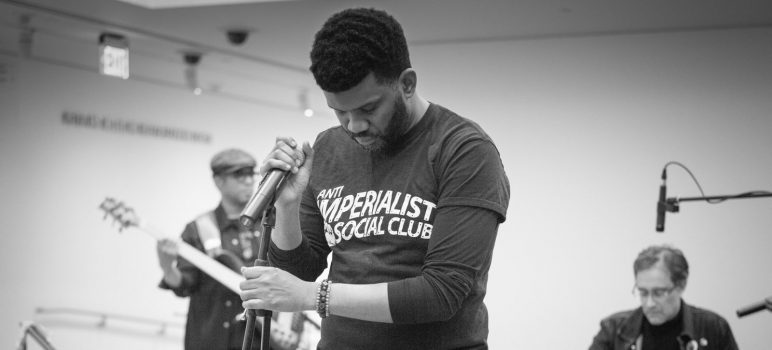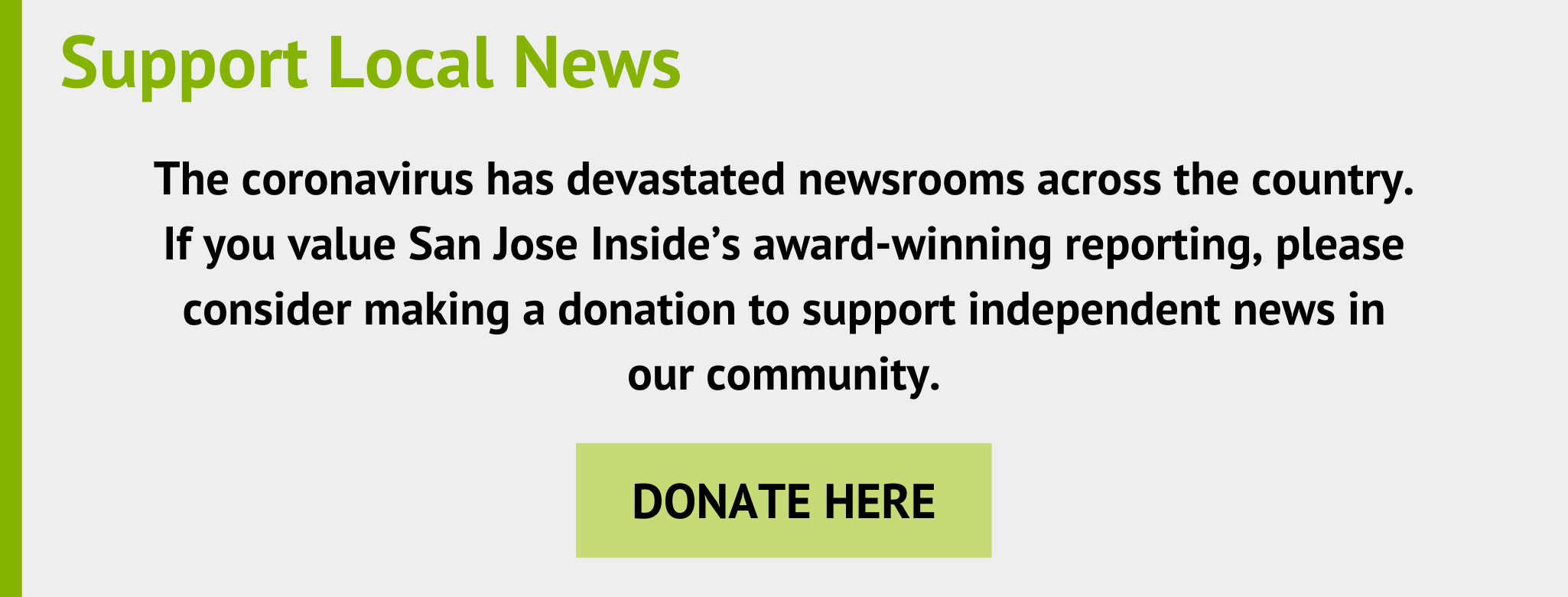Demone Carter thinks New Year’s resolutions are corny, but for him that’s also part of the allure.
The well-known rapper, social servant, former Silicon Valley Artist Laureate, podcast host, father and lifelong San Jose resident welcomes the opportunity to reset after a year that stretched his resolution for professional growth to its limits. While the pandemic pelted vulnerable residents with setbacks, he coordinated volunteers, distributions, communications and donations as Sacred Heart’s director of community engagement.
Carter’s 2021 goal is to grow as an artist and refine his craft. He’s toying with the idea of writing a new song each week, but time will tell whether that is simply wishful thinking.
“As a middle aged rapper—which is to say an ancient rapper—I’m good at what I do, but how can I be a more skillful storyteller?” Carter said. “Even if they're not songs of original work that get put out, what would the practice of doing that do for my craft?”
That’s also what the Silicon Valley’s arts industry should focus on this year, Carter says. He will be pushing the regional arts community, in its liminal state, to do that by centering previously marginalized artists—the ones that have been hurt most by Covid-19 and its ripple effects.
“We’re gonna have to start over anyway, so why not really commit to equity and make sure there’s a diverse, representative group of folks who are involved in this rebuilding and making decisions?” Carter said. “We have to realize the reality of the situation we’re in, and resolve to bring new ideas and new energy to what the next San Jose will be—not try to recreate it.”
If local leaders get it right, Carter says, San Jose’s emerging “micro-scenes”—which include DJ culture, Aztec dance, Japanese Taiko Drumming and hip hop—will have a place in the city’s largest venues and events.
Funding will be among the biggest barriers.
Even with piecemeal help from foundational and government aid, the question in 2021 is not who will thrive, but rather, who will survive, Carter says. The local arts ecosystem and its artists—which are always tenuously balancing creative pursuits with the steep cost of living—are less secure than ever before as venues remain closed and people begin to escape the Bay Area premiums to less expensive locales.
“Until creative work is viewed as work like anything else, we are going to continue to be starving and struggling to create,” Carter said. “And let’s be clear: when things do come back, the arts will be the last thing anybody’s trying to put into their budget post-pandemic.”
There’s already true in San Jose, where portions of Transient Occupancy Tax (TOT) revenues from hotels are distributed by the Office of Cultural Affairs for arts cultural development.
After revenues and reserves shriveled in the pandemic, only $1.2 million in operating grants were recommended for 2021. For comparison, those funds were projected in May 2019 to top $8.6 million.
A positive outcome for 2021 would need to include increased investment of TOT funds into arts across the board, but also increased awareness of what’s at stake, Carter says.
He’s resolved to do his part as one of five Creative License Ambassadors for the city of San Jose in 2021, tasked with connecting residents with creativity and preserving the local arts industry.
“Part of my role will be to say, ‘Look at these amazing artists and people that exist in your city,’” Carter said. “There’s this perception that San Jose is a blank canvas when it comes to creativity—as if nothing's here and we have to import all of our creative talent. That’s obviously not true.”
Editor's note
New Year’s resolutions aren’t for everyone. But for Silicon Valley influencers looking to the other side of this pandemic, they’re a start.
South Bay thinkers from four sectors—arts, business, tech and politics—were asked to chart the road to an improved future over the next 12 months. It’s likely this group won’t RSVP to the same post-pandemic happy hour. And yet, their New Year’s resolutions all centered around a singular philosophy: 2021 is a year for equity.
That’s not a new idea in Silicon Valley, where advocates have long criticized how the region could featherbed some of the world’s richest people alongside a staggering homeless population and struggling service class. But 2021, the year of rebuilding, might be the best shot the region has had to fix some of those imbalances, our subjects say.
In this four-part series, our leaders share how they hope to make it happen. This is part two. Read part one here.



The utter, obscene vanity of people who imagine that their random twitches, squeaks, and incoherent utterances are somehow “art” and that other people should pay them for their narcissism.
I have no use for their “rap music” but I do need someone to clean my gutters and help in my vegetable garden.